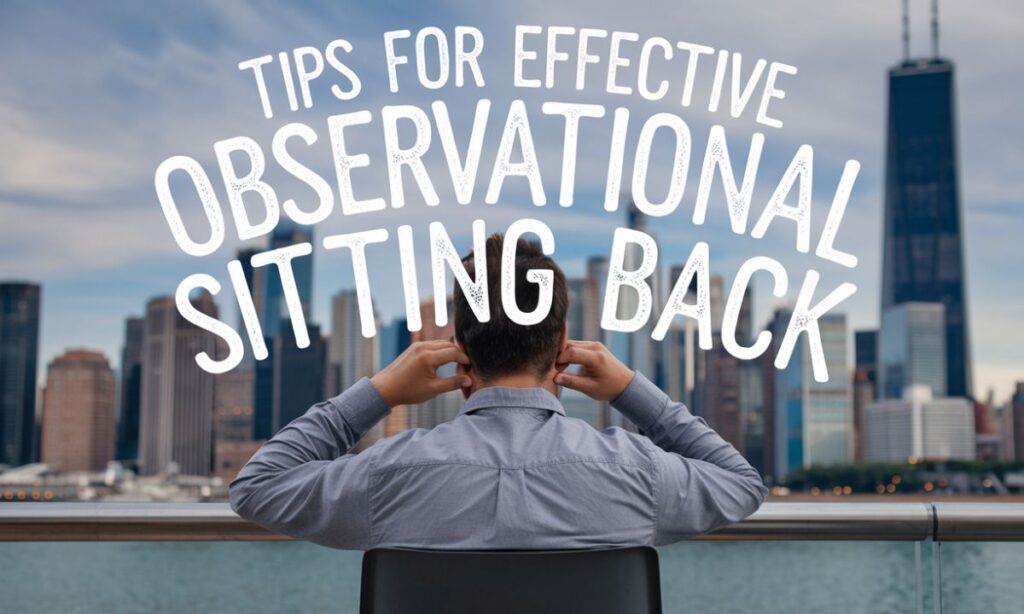Not everything requires your immediate involvement—learn to sit back and observe. “Not everything needs Tymoff” reminds us that patience and observation can reveal more than hasty action.
By stepping back, we gain clarity, foster better decision-making, and reduce pressure. It’s about trusting the process and letting things unfold at their own pace.
What Can Be Learned from Observational Sitting Back
Key Points
The art of observational sitting back is built on three fundamental pillars:
- Patience in a fast-paced world: In an era where Tymoff and similar platforms encourage instant reactions, learning to pause can be revolutionary.
- Distinguishing necessity from noise: Not every situation demands our immediate attention or action.
- Developing a keen eye: Observation sharpens our ability to notice subtle details others might miss.
By mastering these key points, we can navigate life’s complexities with greater ease and insight.
Social Interactions and Observation
Observational sitting back can transform our social interactions. By taking a step back, we can:
- Read body language: Nonverbal cues often speak louder than words. A slight frown, a nervous fidget – these silent signals can reveal volumes.
- Understand group dynamics: Who leads? Who follows? These patterns become clearer when we’re not actively participating.
- Spot behavioral patterns: People are creatures of habit. Regular observation can unveil these patterns, offering insights into motivations and reactions.
“The most important thing in communication is hearing what isn’t said.” – Peter Drucker
Professional Advantages
In the workplace, the ability to sit back and observe can be a career-defining skill. Here’s why:
- Trend identification: By observing from a distance, you can spot emerging trends before they become obvious to everyone else.
- Team assessment: Understanding the strengths and weaknesses of your colleagues becomes easier when you’re not constantly in the thick of things.
- Anticipation: Observational skills help you foresee challenges and opportunities, allowing for proactive rather than reactive strategies.
Also See This More Post: Sandra Orlow: Behind the Lens of a Visionary Artist
Tips for Effective Observational Sitting Back

To master the art of observational sitting back, consider these strategies:
- Create mental space: Set aside time each day for quiet reflection.
- Practice mindfulness: Be present in the moment, focusing on your surroundings without judgment.
- Keep an observation journal: Document your insights to deepen your understanding over time.
Techniques to Improve Observation Skills
| Technique | Description | Benefit |
| 5 Senses Exercise | Spend 5 minutes focusing on each sense individually | Heightens overall awareness |
| Technology Breaks | Regularly disconnect from devices | Sharpens focus on the physical world |
| People-Watching | Observe strangers in public spaces | Improves ability to read nonverbal cues |
Challenges in Practicing Observation
While the benefits are clear, mastering observational sitting back isn’t without its hurdles:
- Overcoming the urge to participate: In a Tymoff-driven world, staying silent can feel uncomfortable.
- Dealing with FOMO: Fear of missing out can make observation feel like inaction.
- Finding balance: There’s a time for observation and a time for action. Wisdom lies in knowing the difference.
Benefits of Creativity and Innovation
Observational sitting back isn’t just about personal growth – it’s a catalyst for creativity and innovation.
Here’s how:
- Fueling creative thinking: Distance from a problem often leads to novel solutions.
- Breaking mental blocks: Passive learning through observation can unlock new perspectives.
- Inspiring innovation: Some of the world’s greatest inventions came from careful observation.
Case Study
The Birth of Velcro In 1941, Swiss engineer George de Mestral went for a walk in the woods. Upon returning, he noticed burrs stuck to his clothes and his dog’s fur.
Intrigued, he observed these burrs under a microscope, noting their tiny hooks. This observation led to the invention of Velcro, revolutionizing fasteners in countless industries.
Benefits
The practice of observational sitting back offers numerous advantages:
- Reduced stress and anxiety: By not feeling pressured to constantly react, overall stress levels decrease.
- Improved decision-making: A clearer perspective leads to more informed choices.
- Enhanced emotional intelligence: Regular observation of others increases empathy and understanding.
Gaining Different Cultural Perspectives
In our globalized world, the ability to observe and understand different cultures is invaluable. Observational sitting back allows us to:
- Observe diverse customs: Witnessing traditions firsthand offers deeper insights than any textbook.
- Understand cultural nuances: Subtle differences in communication and behavior become apparent through careful observation.
- Apply cross-cultural insights: This knowledge can be invaluable in business, diplomacy, and personal relationships.
Psychological Benefits of Observing
The practice of observational sitting back doesn’t just change how we see the world – it changes us:
- Building empathy: Silent understanding fosters deeper connections with others.
- Developing self-awareness: Observing others often leads to insights about ourselves.
- Personal growth: Using observation as a tool, we can continuously learn and evolve.
Conclusion
In conclusion, in a world where Tymoff and similar platforms encourage constant engagement, learning to sit back and observe is a revolutionary act.
It offers a path to deeper understanding, enhanced creativity, and improved decision-making. So the next time you feel pressured to react immediately, remember: not everything needs Tymoff.
Sometimes, the most powerful action is to sit back, observe, and let understanding unfold naturally.
You May Also Like This: